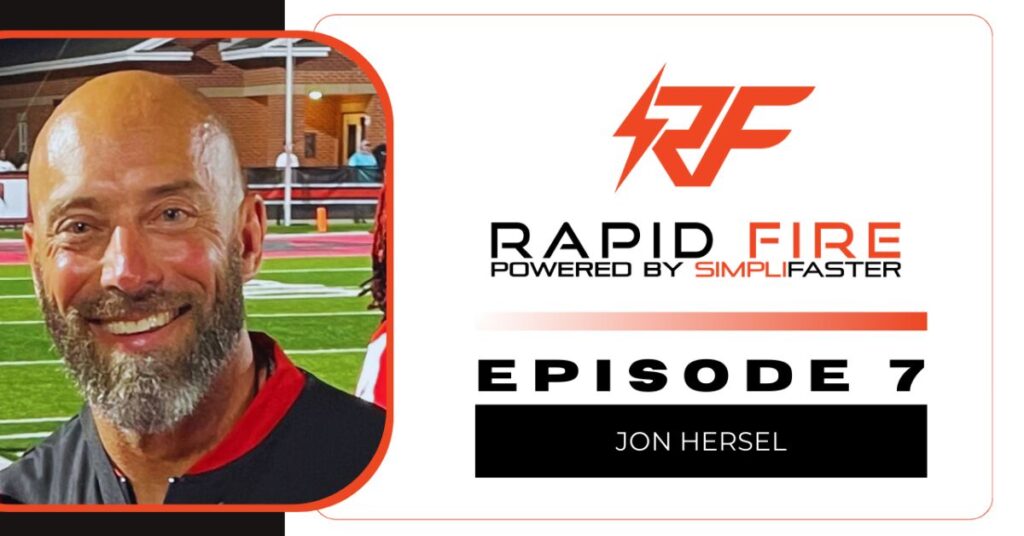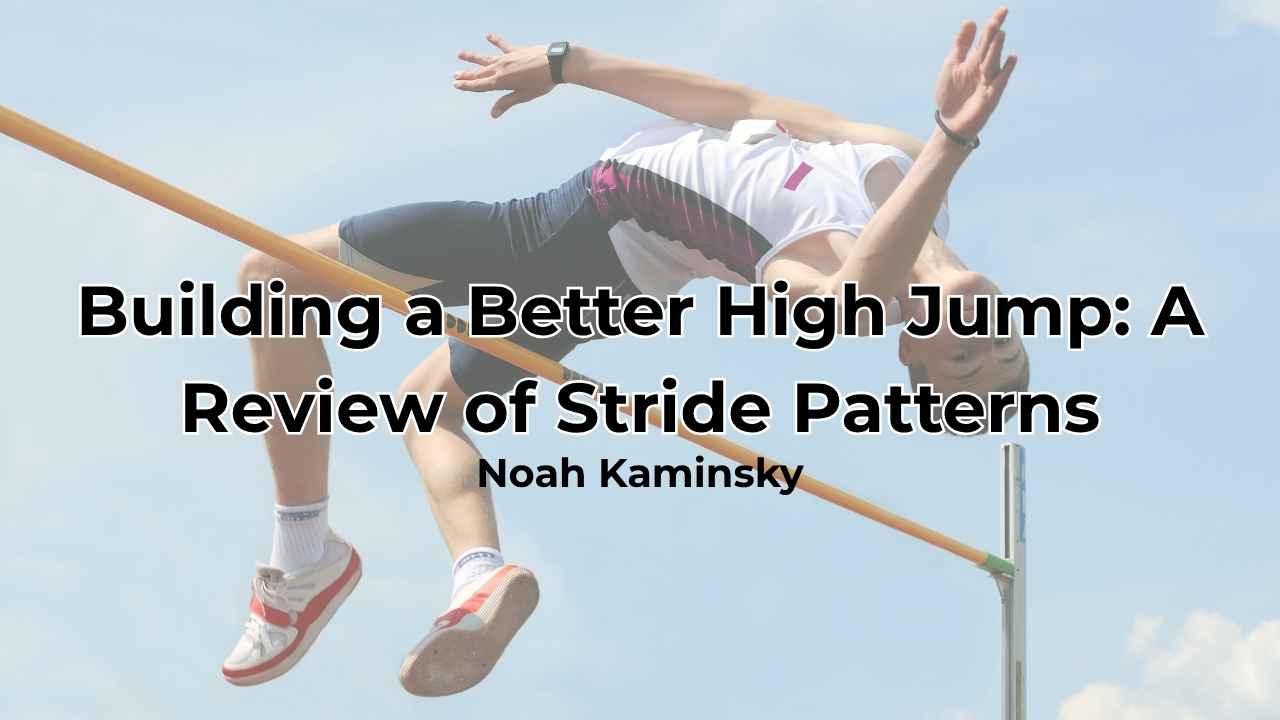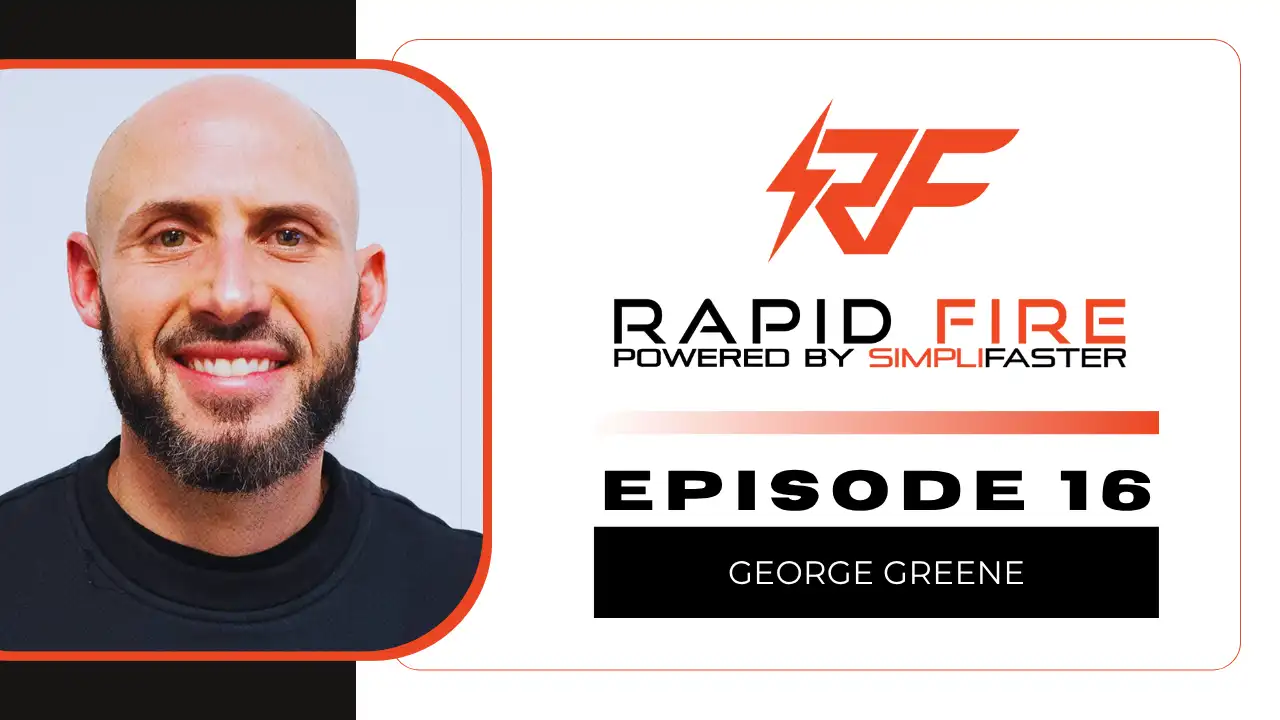“This is where you are—how do you make the most of it and get the best for your athletes?’”
Whether an athlete executing a technical skill or a coach managing a performance space, constraints will always impact decisions and outcomes. Coach Jon Hersel, Director of Performance at Saraland High School in Alabama, sits down with host Justin Ochoa on Rapid Fire to discuss factors that guide his choices in athlete development.
“If you have a system and that system works for you and you’re getting results, your athletes are healthy, they are playing fast, you’re successful…what you do, that’s great for YOU,” Hersel says. “That may not work for me—and what works for me may not work for you. And that’s based off my situation and the constraints around that.”
What works for Hersel has changed over time—he elaborates on how, earlier in his career, his programming was very driven by squats, benches, and cleans, but now he’s adapted to also include more single leg work, unilateral patterns, and movement in different planes. Additionally, Hersel keeps a focus on short accelerations and microdosing speed.
“We do some sort of sprint, some sort of jump, and some sort of throw every day,” Hersel says, making it clear he still incorporates Olympic lifting, noting that his athletes will perform a set of cleans in the weight room and then roll over to the training turf and sprint a fly 10 timed by Dashr.
We do some sort of sprint, some sort of jump, and some sort of throw every day says @jonhersel. Share on XRapid Fire Episode 7. Watch the full episode with Coach Jon Hersel and Coach Justin Ochoa.
Some of Hersel’s coaching is based on assessing his situation as a coach; additionally, he has adjusted to more of an output-based model over a technique-based model due to the dynamic, disruptive playing environments his athletes compete in, having to adapt to interactions with an opponent, weather, obstacles/constraints of the field, etc.
“The vast majority of sports our athletes play, they are not in a perfect environment,” Hersel says.
The vast majority of sports our athletes play, they are not in a perfect environment, says @jonhersel. Share on X
Rapid Fire Excerpt. Coach Hersel on focusing on outputs first before pinpointing limiting factors in technique.
In addition to recognizing constraints, coaches also need to maximize assets. For Hersel, the facility at Saraland was modeled on training spaces at the University of Alabama-Birmingham and includes a 5,000 square foot weight room and adjacent, covered training turf for the aforementioned sprints, jumps, and throws. In designing and outfitting the space, Hersel explains the importance of sightlines, flow, and overall space management and how he makes the best use of having a top-flight facility.
Facility Tour. Coach Hersel provides a virtual tour of the weight room and training turf at Saraland High School.
“One thing you can never get back once you get rid of it,” Hersels says, “Is space.”
Since you’re here…
…we have a small favor to ask. More people are reading SimpliFaster than ever, and each week we bring you compelling content from coaches, sport scientists, and physiotherapists who are devoted to building better athletes. Please take a moment to share the articles on social media, engage the authors with questions and comments below, and link to articles when appropriate if you have a blog or participate on forums of related topics. — SF






